Preventing Algae Growth
PREVENTING ALGAE GROWTH
Algae are the green growth that can cover the walls of your tank. Prevention is one of the best ways to treat algae. If you keep algae under control, you won’t need to work so hard to get rid of it. Ways to prevent algae growth include:
- Control how much light reaches your tank. Placing the tank out of direct sunlight, like a room with only a few or no windows, will help slow the growth of algae. You can also use a timer to control when and how long the lights in a room are on.
- Do not over-feed your fish. Excess food in the water will stimulate algae growth. You do not want to feed your fish more food than they will eat in a few minutes, and adding a “cleaning crew” of scavengers to eat the leftovers will also help.
- Clean it off your tank weekly by using a dedicated sponge or scraper. Most of these are readily available at any pet supplier.
- Add chemicals to your tank. This method is NOT recommended, however, because adding chemicals is never 100% beneficial. Some types of plants and fish do not react well to these chemicals, causing unwanted side effects.
- Have an algae-eating species of fish or snail in your tank. This is the most effective method and requires the least amount of work and expense.
USE SNAILS
There are several different types and kinds of snails. One of the most common types seen are Maylan Snails. These snails are rather effective at getting rid of algae and other debris. However, they breed very fast and require the owner to thin down their numbers often. Apple snails are another commonly found snail. These are rather large and move about constantly.
Maylan Snail
Regardless of the snail you choose, you want to make sure they have been aquarium-raised. This helps ensure they are disease free. Snails found in the wild can often destroy an aquarium with the diseases they carry.
Also keep in mind that it is important to choose snails that will do well in the same environment as your discus fish.
USE FISH THAT EAT ALGAE
There are several different types of algae-eating fish that you can use in your tank. One of the most popular fish is Hypostomus Plecostomus, commonly referred to as Plecostomus. These fish can grow to be very large (sometimes more than 18 inches), but they are very good at keeping a tank free of algae. They eat live foods as well and can pose a threat to small fish and eels. These fish will claim an area of the tank and keep it clean. They will use their large mouths to move over your decorations and the sides of your tank to get rid of any algae that is present.
Plecostomus
The Chinese Catfish or Chinese Algae Eater is also good for keeping your algae under control. These fish are cheap, but they keep working and are always swimming, clinging to the glass, and cleaning your tank. You will probably need two for tanks larger than 20 gallons and they appear to do better when they work as a pair. While these fish are very aggressive when it comes to algae, they won’t bother any of the other fish in the tank. Keep in might that as they get older, they become less effective at cleaning up algae. You will probably need to get new ones about every three years. Note that a fish called the Siamese Flying Fox (Epalzeorhynchus siamensis) looks and acts very similarly to the peaceful Chinese Catfish/Algae eater. At maturity, however, this fish can become very territorial and aggressive. You will want to avoid adding this fish to your discus tank!
Chinese Algae Eater
Another algae eating fish is called the Oto Cat. This fish is very similar to the Chinese Cat fish described above, but is much smaller. They have triangular-shaped heads. When they reach adult status, they will only be a little over an inch in length. This makes them perfect for tanks that are smaller than 20 gallons. Oto cats work fine by themselves or in pairs. They will be found near the sides of the tank, the undersides of leaves, or even under driftwood that is in your tank.
Oto Cat
Also keep in mind that it is important to choose fish that will do well in the same environment as your discus fish. You will also have to feed your algae-eaters more than just algae because they will not get enough nutrition from just the algae present in your tank.
QUESTIONS
- Why is preventing algae growth important for your discus aquarium?
- Why are clean tanks important for discus?
- What are some easy ways that you can prevent algae growth?

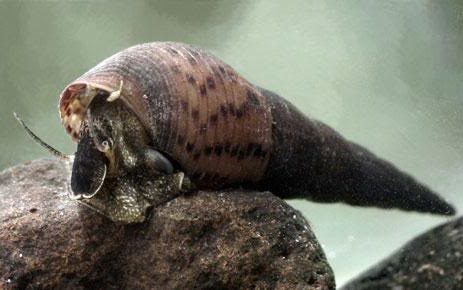
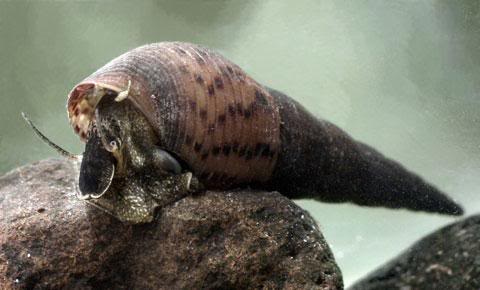

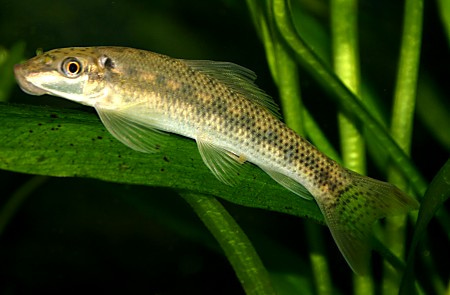
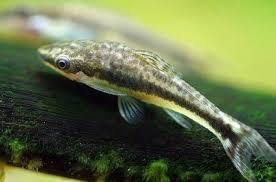
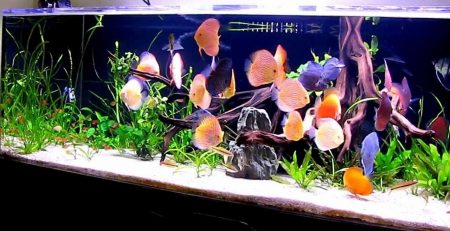
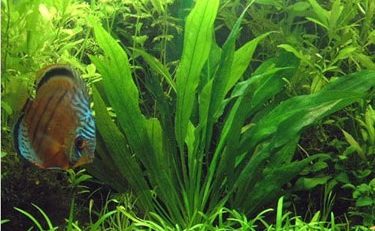


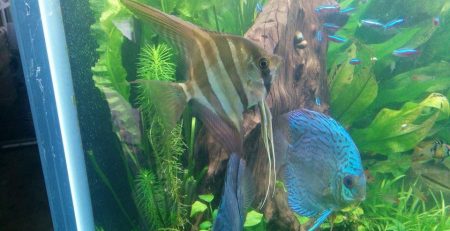
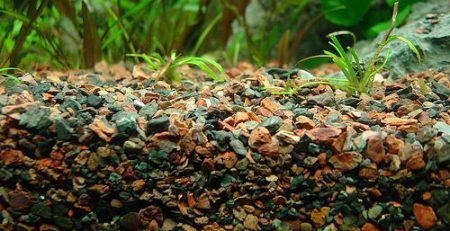

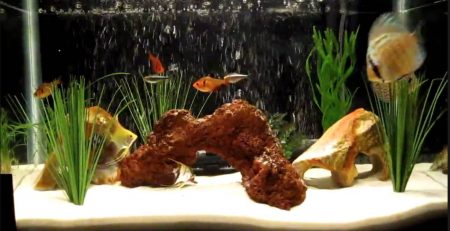
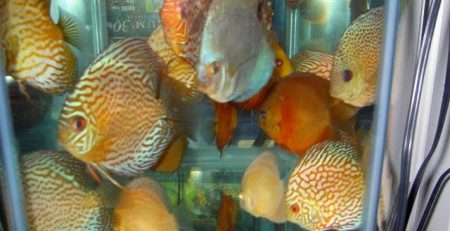

Leave a Reply
You must be logged in to post a comment.